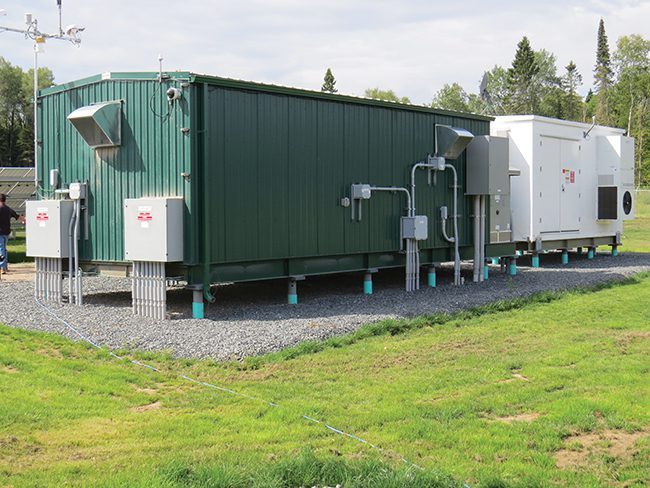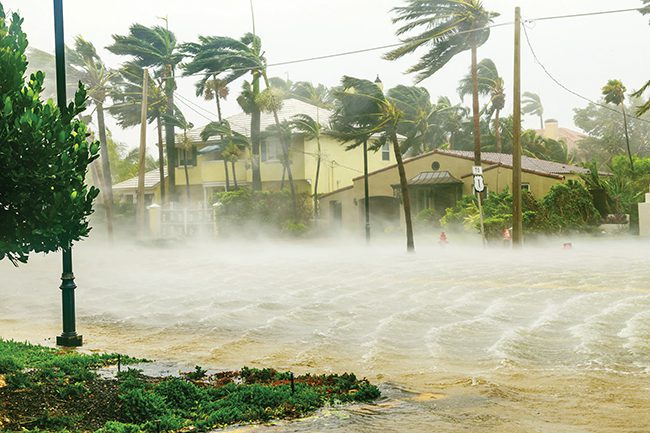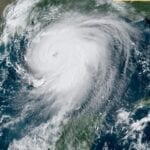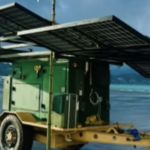Microgrids are small, self-sustaining local power systems that provide big benefits to the communities they serve. As extreme weather events become more common, microgrids will become more important not only for keeping the lights on, but also in some cases for saving lives.
The U.S. experiences more power outages than any other developed nation in the world, according to the nonprofit Pew Charitable Trusts. Power outages are fueled by the combination of extreme weather events brought on by climate change, aging infrastructure, and high demand.
Traditionally, outages have been managed by enhancing interconnectivity and hardening electricity network infrastructure—aka the grid—but this approach is increasingly being supplemented with smaller, flexible units known as microgrids. When extreme weather events threaten the reliability of the traditional grid, microgrids have the capability to disconnect and operate autonomously to provide key points of energy resilience for communities in their time of need.
Microgrids are what they sound like: A small, self-sustaining local energy grid. They serve a relatively small geographic footprint and have the capability to island from the broader grid and control local generation sources to meet their internal energy demands. They can rely on traditional fuel sources, like diesel and natural gas, or include innovative and renewable energy resources, like solar, wind, and battery energy storage (Figure 1). There is no single microgrid playbook; it’s about combining energy resources to meet the local needs.
 |
|
1. The equipment shown here is part of a remote First Nations community microgrid in Canada. The system uses solar power, battery storage, and grid technology to supply half of the community’s energy needs during the day. Courtesy: Stantec |
We’ve already seen a significant rise in the intensity and frequency of extreme weather events that cause widespread power outages and disruptions to the critical infrastructure our communities rely upon, and as these events continue to grow in both quantity and severity, we need to prepare for the new normal. Microgrids are a possible solution for protecting our communities from the impacts of these growing events including winter storms, hurricanes, and wildfires.
Winter Storms
In February 2021, Winter Storm Uri swept through the southern U.S. causing record snowfall and low temperatures. It was particularly devastating in Texas as the infrastructure there was not designed to withstand the conditions. The result? A crisis of energy supply and energy demand.
As temperatures in the region dropped, Texans were understandably heating their homes to stay warm. This resulted in the Texas electrical grid, which is largely isolated from the national grid, hitting a new peak in energy demand and exceeding the estimated demand by 9,600 MW. At the same time, the state’s ability to generate power was stymied by the cold temperatures. Natural gas distribution infrastructure froze, wind turbines were iced over—even a nuclear power plant was taken offline.
During the aftermath, more than 3.5 million Texans experienced power outages, and this impacted them in several ways. Homes were cut off from the electrical grid and people were left without electricity to keep the lights on, heat their homes, or charge their devices to keep in touch with loved ones.
In the days following Uri, customers with backup generation and sufficient fuel were okay, but many weren’t prepared. Hotels with power quickly filled up, and there were anecdotes of people sleeping in places like furniture stores to stay warm. Gas stations were overrun as some people collected fuel to run generators or were forced to stay warm in their cars. Even blankets were difficult to find, leaving some of our most vulnerable people without support, and tragically, a number of deaths were attributed to carbon monoxide poisoning resulting from peoples’ improvised means of staying warm.
As we look forward, it seems responsible to consider how communities can become more resilient. In some cases, organizing distributed energy resources and establishing microgrids may be able to reinforce energy resilience for critical infrastructure and ensure emergency facilities remain online.
Hurricane Season
Florida faces the threat of tremendous hurricanes each year from June through November. In recent years, hurricane season has produced some very significant storms (Figure 2), causing electrical outages more often than in the past.
 |
|
2. Hurricanes often cause serious disruptions to the power grid, but microgrids can help keep the lights on in areas where they are deployed. Courtesy: Stantec |
Utilities are taking proactive measures to harden the grid in an attempt to ensure equipment is ready to withstand more severe weather conditions, such as high-speed winds and extreme flooding. But as these storms become more frequent and more damaging, hardening strategies will need to become more elaborate and potentially costly. Simply put, a lot of power infrastructure in many coastal communities remains vulnerable to the next hurricane or major storm event.
Microgrids could help in hurricane situations by establishing local areas of energy resilience. By focusing on smaller microgrid units, important buildings and operations can be reinforced more efficiently and designed to withstand more extreme conditions and disruptions. Think hospitals, data centers, water utilities, and more. If designed properly, microgrids have the potential to provide 24/7 backup power solutions for vital community services to withstand power grid outages. By ensuring core services are maintained, microgrids could allow utilities to prioritize broader system and community needs in their outage response strategies.
Wildfires
In California, power lines mixed with high winds and dry conditions are taking the blame for some of the most destructive wildfires in recent history—wildfires that have destroyed entire communities and led to the loss of many lives. In response, utilities in the state have implemented public safety power shutoffs. In one instance, more than a million people went without power for an entire day in October 2019. Although the shutoffs are good at preventing fires, they can be disruptive, costly, and are at direct odds with the state’s planned investment in building a “22nd century grid.”
From rural communities to city centers, microgrids could help facilitate more flexible electricity system operation. Finding the right balance of interconnection and decentralized microgrid energy resources will be important for avoiding redundant investment. However, communities’ access to electricity cannot be left at the mercy of windy conditions. The combination of high cost and safety risk associated with wildfires provides a strong rationale for investing in microgrid solutions for the communities most impacted by these shutoffs.
A Solid Backup Plan
During disruptive events, like winter storms, hurricanes, and wildfires, microgrids can disconnect from the traditional grid and operate autonomously. By reinforcing and supporting key operations during extreme events, the energy resilience that microgrids can offer to communities could very well save lives. As these events continue to grow in intensity and frequency, our power infrastructure must be adapted and redesigned. Microgrids add valuable flexibility to our infrastructure and can improve our capacity to respond to unpredictable future events.
—Dane Labonte (dane.labonte@stantec.com) is a business development analyst with Stantec.











